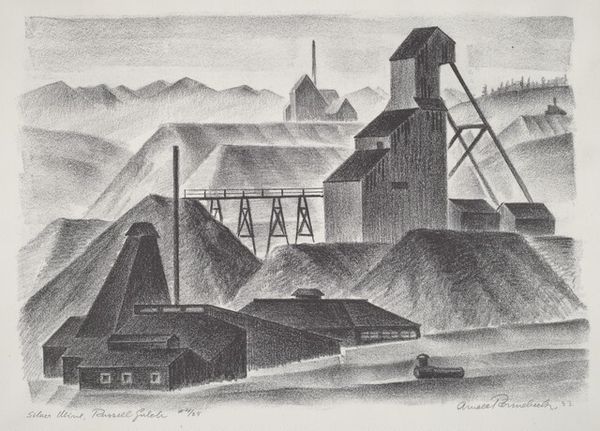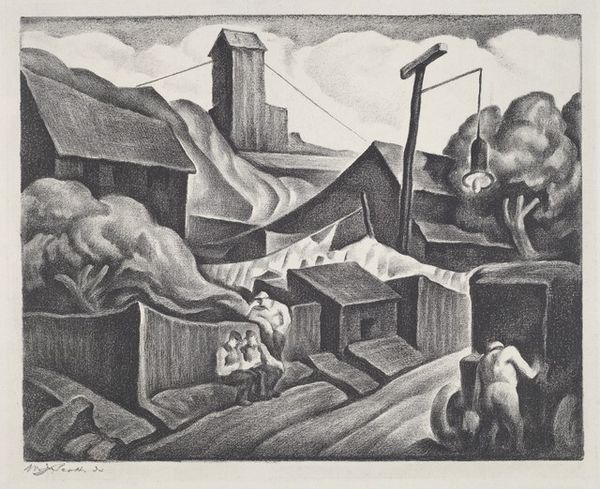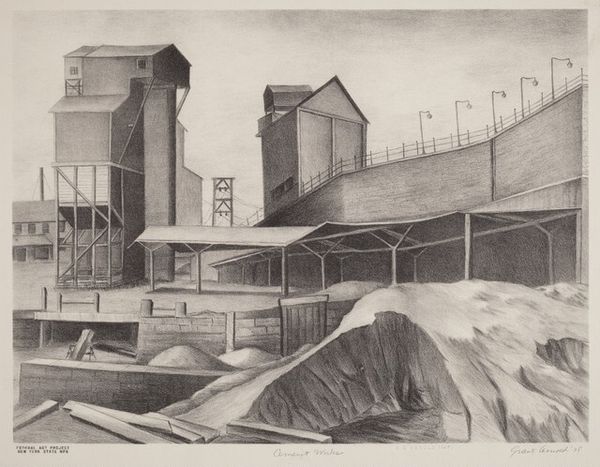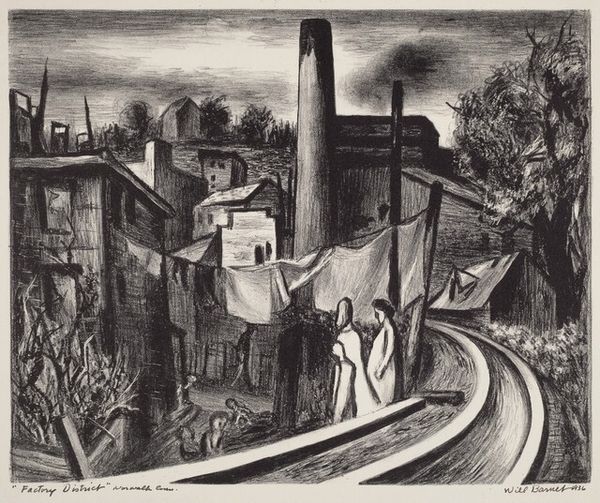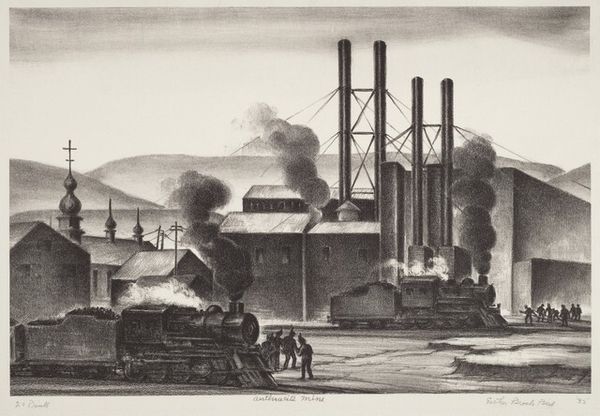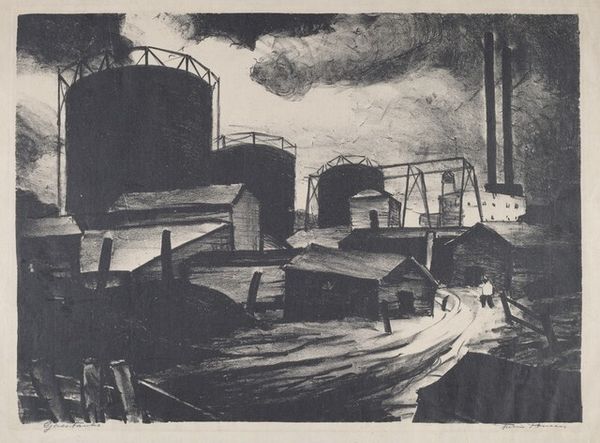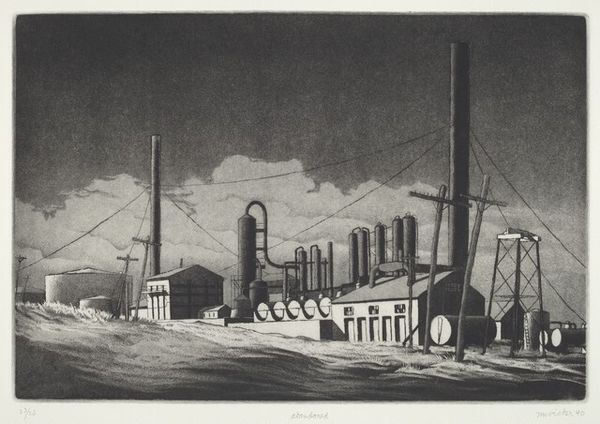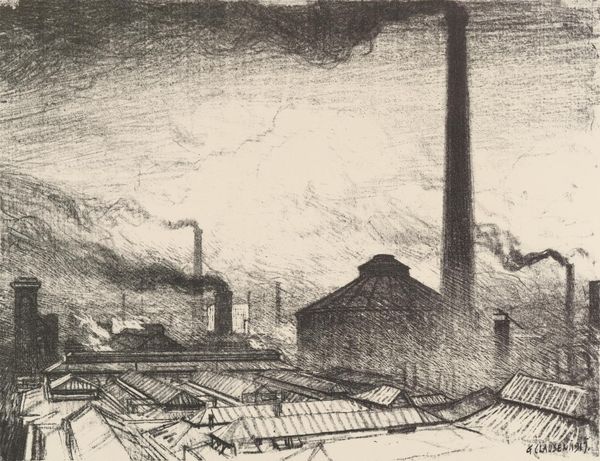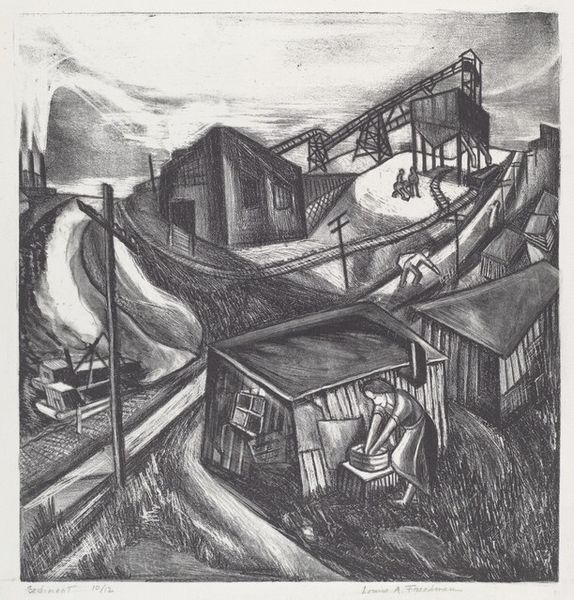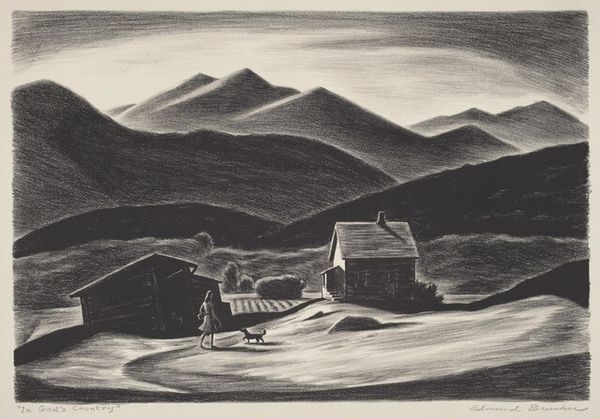
print, graphite
#
precisionism
#
pencil drawn
# print
#
landscape
#
charcoal drawing
#
pencil drawing
#
graphite
#
cityscape
#
realism
Dimensions: image: 278 x 350 mm sheet: 374 x 503 mm
Copyright: National Gallery of Art: CC0 1.0
Editor: This is Helen Louise Beccard’s "Ice and Coal Factory," a graphite print from 1937. It depicts an industrial scene with such sharp realism, yet the tone feels bleak to me. What social commentaries do you see in this piece? Curator: This print invites us to consider the complex relationship between industry, environment, and labor during the Depression era. Beccard captures the architecture of the factory, placing it within the landscape. Does the factory dominate, or does the landscape subtly resist? Editor: I hadn’t thought of it that way, but there is a sense of scale there; even with its smokestack, it seems small in comparison to the mountain range. Curator: Exactly. How might that contrast be interpreted? Does the work present an uneasy harmony or an outright challenge? I also ask, how does gender factor into this industrial portrayal, given Beccard's position as a woman artist? Editor: Perhaps she's highlighting the disconnect between the harsh industrial reality and the romanticized ideal of the natural landscape? Was she actively involved in labor rights or environmental movements, or is this piece more observational? Curator: We need to consider how the image participates in larger dialogues about industrialization and its effects on community and environment. Consider also whether the lack of human figures reinforces the idea of a machine-dominated world, echoing debates within feminist critiques of technology at the time. What are your thoughts? Editor: That gives me so much to think about – the environmental concerns, labor, and the female gaze upon these spaces! Thanks for contextualizing all of those layers. Curator: It's precisely these interwoven layers of meaning that make this work so compelling. Thank you for taking this journey with me, through the depths of this image.
Comments
No comments
Be the first to comment and join the conversation on the ultimate creative platform.

